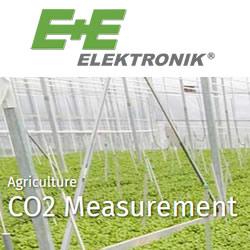Rising Energy Costs & Climate Change – Technology in Indoor Farms
While indoor farming offers numerous advantages, it's essential to acknowledge one of its major challenges: energy consumption. The controlled environment required for optimal crop growth demands a significant amount of energy for lighting, heating, and cooling. In an era when sustainability is a top priority, finding solutions to mitigate rising energy costs and reduce the environmental impact of indoor farming is crucial.
Climate change has brought about unpredictable weather patterns and "natural" disasters, making it increasingly challenging for traditional outdoor agriculture to thrive. Indoor farming provides a controlled environment where factors like temperature, humidity, and lighting can be finely tuned to optimize crop growth. This predictability is essential for reliable food production, especially in regions susceptible to extreme weather events. These farms can consistently deliver crops, reducing the vulnerability of our food supply to seasonal fluctuations and crises.
While indoor farming offers numerous advantages, it's essential to acknowledge one of its major challenges: energy consumption. The controlled environment required for optimal crop growth demands a significant amount of energy for lighting, heating, and cooling. In an era when sustainability is a top priority, finding solutions to mitigate rising energy costs and reduce the environmental impact of indoor farming is crucial.
Indoor farming AI sensor and software systems such as EcoSense isn't just optimizing crop growth; it's also optimizing energy usage. AI algorithms analyze data from a network of sensors continuously monitoring variables like temperature, humidity, CO2 levels, and nutrient concentrations. These algorithms consistently give indoor farmers recommendations and insights based on real-time data, ensuring that energy is used only when and where it's needed. By doing so, they significantly reduce energy waste, making indoor farming more sustainable and cost-effective. — Read how one vertical farm using EcoSense users reduced their energy consumption by 25% on https://ecobloom.se/case%20studies
Farm management platforms like the EcoSense dashboard integrates data from sensors and AI algorithms, providing farmers with a real-time view of crop health and system performance. More importantly, it empowers farmers to remotely control and monitor their indoor farms through intuitive interfaces. This level of control allows them to make energy-efficient decisions. Get a glimpse of what the dashboard looks on: https://www.youtube.com/watch?v=DTAYo3T7jCk
technologies such as EcoSense not only optimizes crop growth but also contributes significantly to energy efficiency. Intelligent systems like this ensure that energy is used purposefully, reducing costs and minimizing the environmental impact of indoor farming. As EcoSense continues to evolve and become more sophisticated, indoor farming, especially indoor farms integrating technologies like this in their farms is well on its way to becoming a sustainable and economically viable solution to our food production needs.
Featured Product


